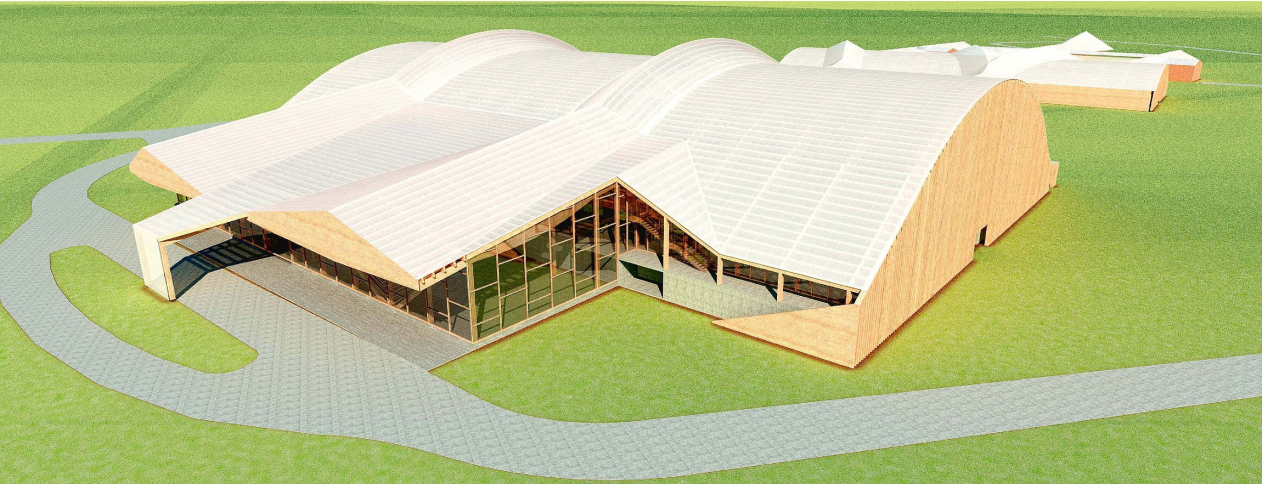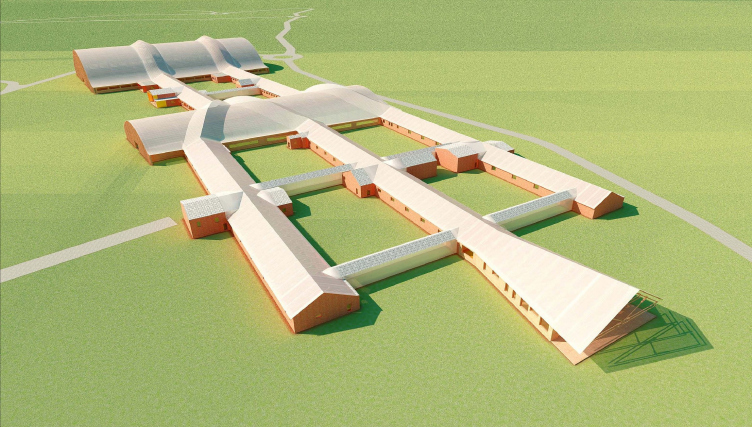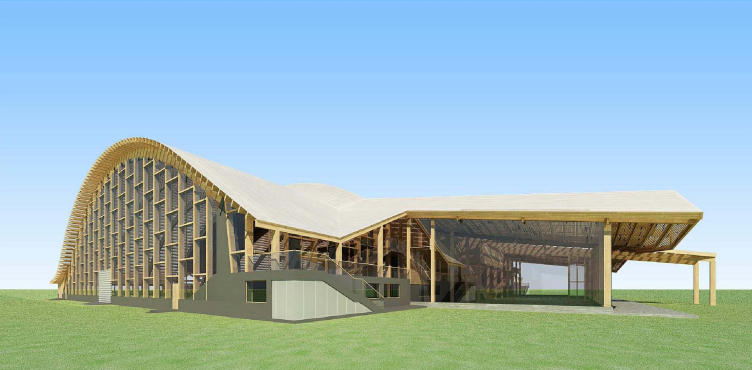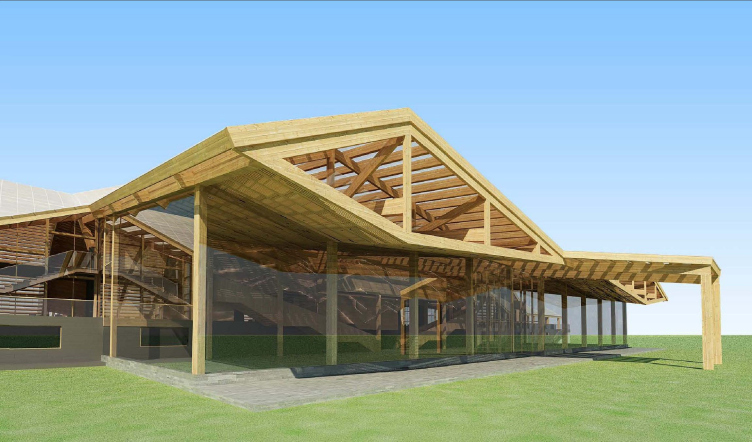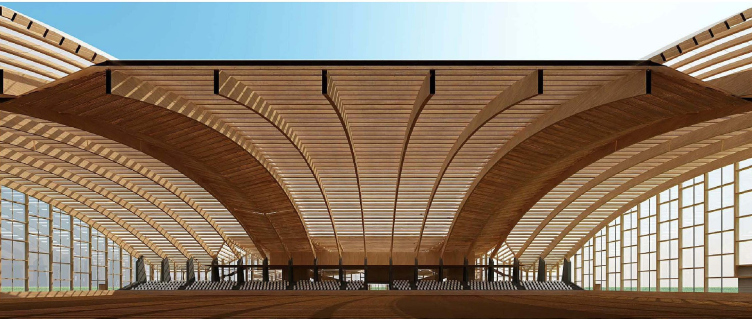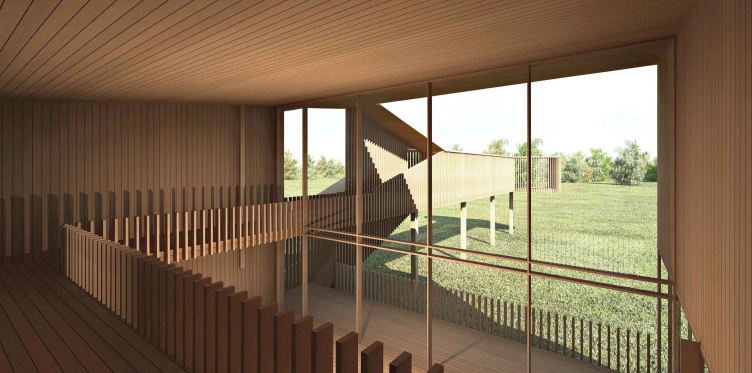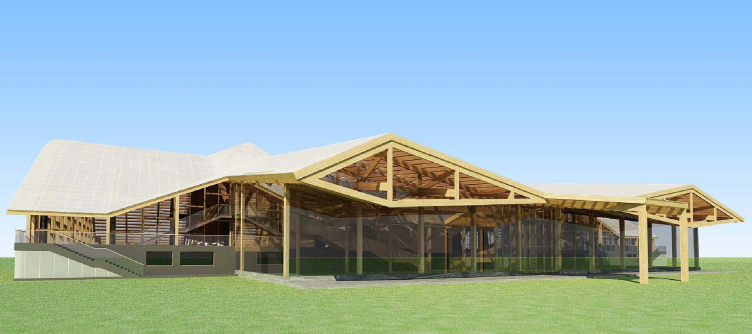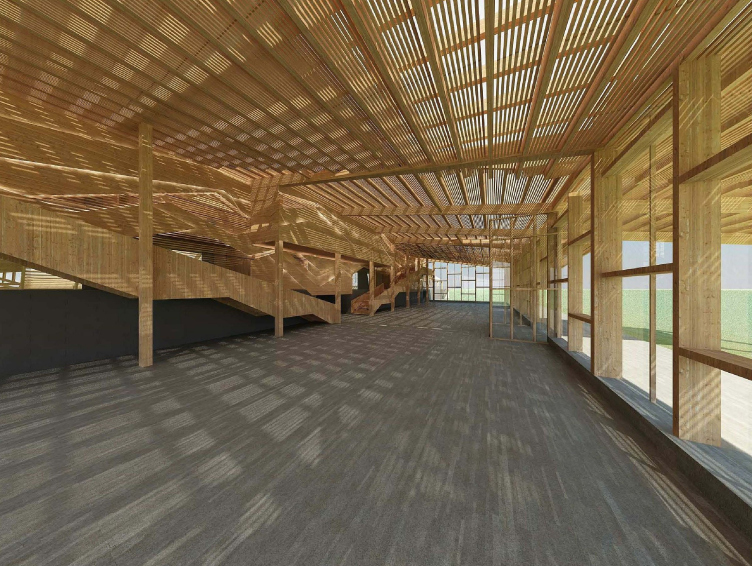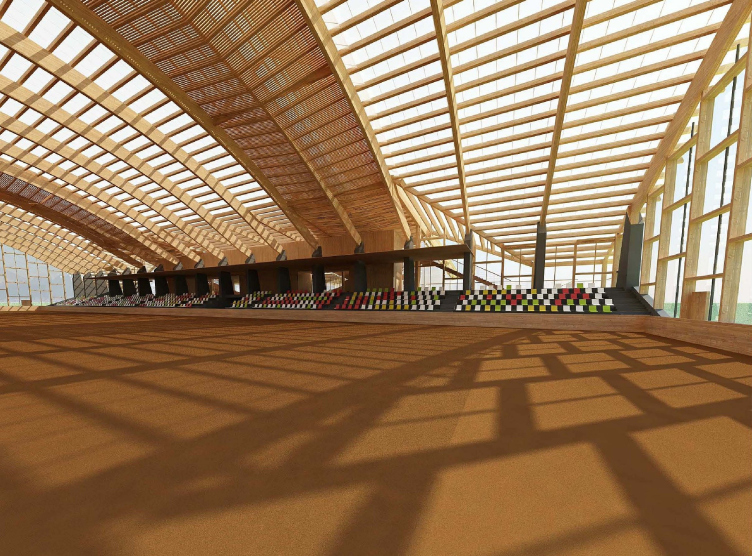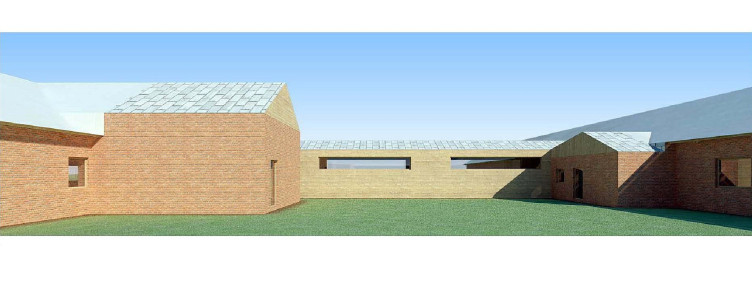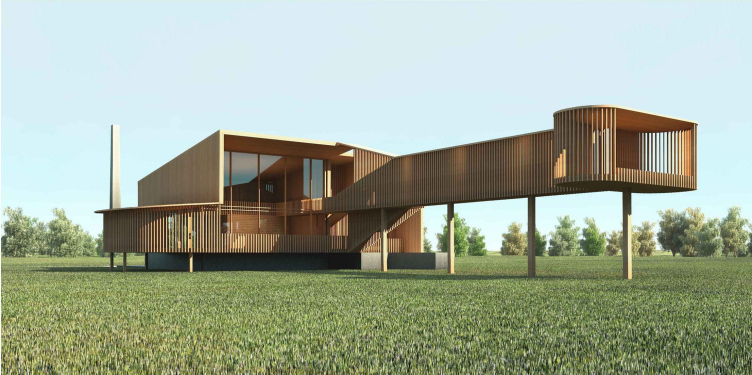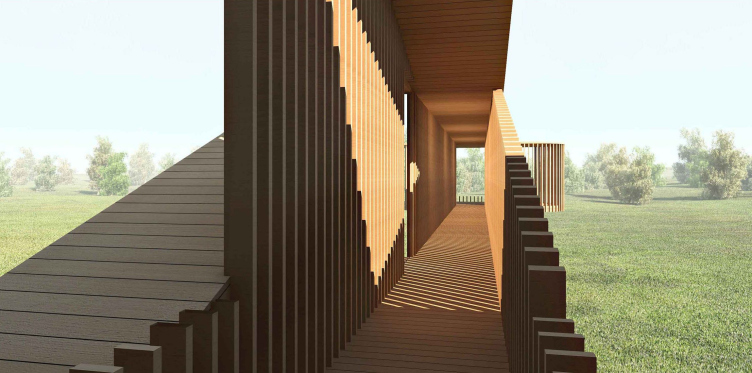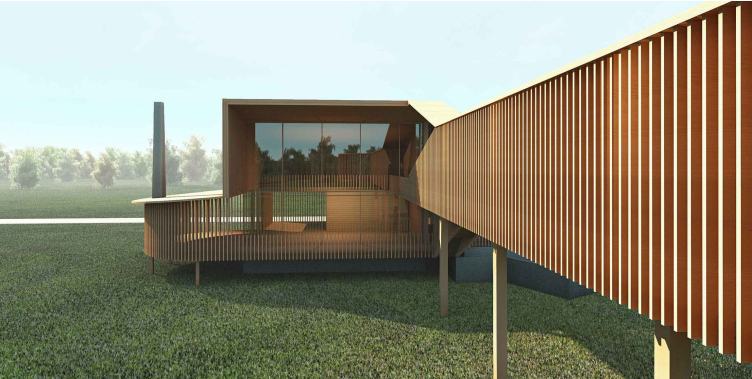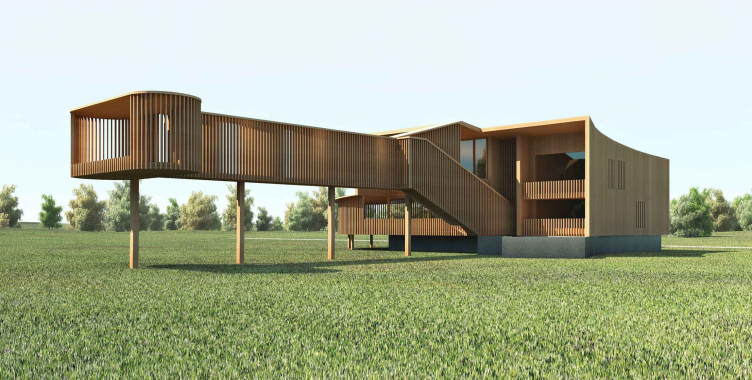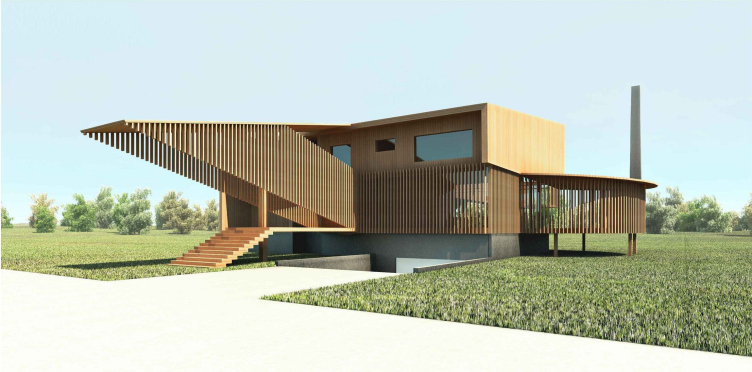The land site that,
according to the master plan is allotted for the construction of the polo club,
sports five sizeable red-brick maintenance buildings - three parallel-standing
poultry houses on the northern side of the site and another two closer to its
southern border. The architects liked the picturesque brickwork, and they
included these volumes into the overall composition of the compound, linking
them to one another with overpasses and turning them into stalls and other
maintenance facilities. As a result, they got a system of one-storey buildings
crossing at a right angle and a multitude of courtyards between them. Between
the “trimaran” and the “catamaran” of the stalls, and perpendicular to them,
the Small Riding Hall is situated. It is linked with two parallel buildings
with overpasses to the Large Riding Hall.
The prevalence of right angles in the composition of the complex is softened
and set off by the introduction of smooth lines – the sloping arched roofs of
the Large and Small riding halls. And, in order to keep the contrast between
the circular lines and the straight ones from being too harsh, the edges of the
gable roofs of the stalls are “stretched” across the arch-shaped roofs and
finished in triangular frontpieces on the main façade of each of the two riding
halls.
The building of the Large Riding Hall consists of two volumes – the arena and
the foyer, between which the 712-strong stands with a balcony and maintenance
facilities are situated (the storage, the cloakroom, the toilets, and the
kitchen of the restaurant). The roofs of the two buildings will be made of
glulam with a coating of semi-translucent polycarbonate
As far as the guest cottages are concerned, there will be 76 of them. It is
expected that they will be situated on the land sites around the polo game
field in such a manner that their guests will be able to watch the game without
ever going out to the stands. To achieve this, each cottage is equipped with an
overpass gallery that leads to a capacious viewing platform (almost a dozen
square meters), an individual “box” of sorts. The length and the height of the
overpasses depend on the distance from the field and the relief of the terrain
– this is why no two cottages here are exactly alike, if only the master
composition principle is dictated by the image of a graceful good-looker.
Horse Catamaran
In the near future, on the 24th kilometer of Rublevskoe Highway, the new “President Polo Club” will be built. Most of its facilities are now being designed by Totan Kuzembaev architectural studio.
